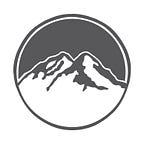A Chat with John Shaw
Learning from our National Forests
The night of Nov. 11 found us here at the Institute for Mountain Research gathering in the amphitheater outside Jewitt, accompanied by a handful of students and U.S. Forest Service Inventory and Analysis Biologist John Shaw. The stars had aligned once again for our IMR’s second ever “fireside chat”, and we soon were gathered around a small fire under clear skies, cooking dirtbag burritos and drinking hot cider in an attempt to stay warm. Everyone was enthusiastic as John recapped his experience with the Forest Service, which started in Logan at Utah State and brought him all over the Western United States before winding up in his position at the Rocky Mountain Research Station in Ogden. Some highlights of his talk included meeting Brent and Jeff in Scotland, being stranded with out a motor floating down a river in Alaska with a boat full of tree samples, and clearing up some common misconceptions about wildfires and pine beetles that plague our forests. All in all, it was a great chat, and John proved to be someone who had created a successful career in biology while also giving us insight into what it takes to acquire such a position, and what to expect on the way. After all, what are our mountains without their forests and those who manage and protect them?
John was kind enough to leave us with some useful likes, for anyone who may wish to follow up with the Forest Service:
- National Forest Inventory and Analysis (FIA) program:
- Interior West FIA program
- Treesearch
All new (and some old) Forest Service research publications end up here, although most are usually also linked though Google Scholar, ResearchGate, etc. FIA publications are mixed in with all the rest or R&D pubs, so there’s no easy way to separate. For a sampling of pubs from our office, you can try some author searches (e.g., Shaw, John D.; Goeking, Sara A.; DeRose, Robert Justin; Moisen, Gretchen G.). They haven’t yet updated the search engine to deal with more than last names, so just use last names to start and find the specific person by looking at the first names or initials in the search results. To get to the same information in Google Scholar, and likely get fewer unwanted results, try something like author:jd author:shaw inventory in the Scholar search box. Once you have found a paper that looks right, for most the author name link will take you to our Google Scholar profiles. - Federal jobs: It’s pretty simple to get started here. Leave the location blank and use keywords like “forest”, “ecologist”, “botanist”, etc. to browse what kinds of jobs are out there. Depending on education and experience, graduating students can expect to qualify for jobs in the GS-03 to GS-07 range, but it doesn’t hurt to look at some of the higher grades to get a feel for the kinds of career opportunities. Scientists general start at the GS-11/12 level and go up from there, as do most of the senior management positions on the National Forest Systems side.
(event writeup by Jake Foster)
